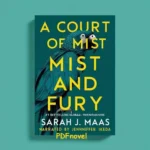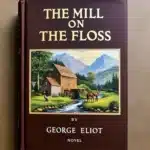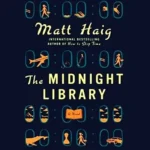Introduction to “Alice in Wonderland”
“Alice in Wonderland PDF” is a timeless masterpiece written by Lewis Carroll, a pen name for Charles Lutwidge Dodgson, an English author and mathematician. First published in 1865, the novel has captivated readers of all ages with its whimsical and surreal narrative. This article aims to delve into the various aspects of this iconic book, including its plot, characters, themes, and cultural significance.
| Name of PDF | Alice in Wonderland |
|---|---|
| No Pages | 51 |
| Author | Mark Twain |
| Originally Published | November 1865 |
| Language | English |
| Genres Characters: | Children’s literature, Fantasy Fiction, Absurdist fiction, Fantastique Hatter, Cheshire Cat, Alice, Queen of Hearts, |
| Size | 0.8 MB |
| Chek, latest edition |
More Novel Neon Gods PDF
Table of Contents

The Background of Lewis Carroll
Lewis Carroll, born on January 27, 1832, in Daresbury, Cheshire, England, was a multifaceted individual known for his contributions to literature and mathematics. He studied at Christ Church, Oxford, where he later became a lecturer in mathematics. Carroll’s interest in storytelling and wordplay led him to create the enchanting world of “Alice in Wonderland.”
Plot Overview of “Alice in Wonderland PDF”
“Alice in Wonderland” follows the adventures of a young girl named Alice, who falls through a rabbit hole into a fantastical realm filled with anthropomorphic creatures and nonsensical situations. Throughout her journey, Alice encounters peculiar characters such as the White Rabbit, the Cheshire Cat, and the Mad Hatter, each contributing to her surreal experiences.
Themes Explored in the Book
The novel explores various themes, including the journey of self-discovery, the loss of innocence, and the nature of reality. Through Alice’s encounters and interactions with the inhabitants of Wonderland, Carroll delves into the complexities of growing up and navigating the absurdities of life.
Characters in “Alice in Wonderland”
- Alice is the curious and adventurous protagonist who serves as the reader’s guide through Wonderland.
- The White Rabbit: A punctual and harried character who inadvertently leads Alice into Wonderland.
- The Queen of Hearts is a tyrannical and temperamental ruler known for her love of croquet and penchant for issuing arbitrary decrees.
- The Cheshire Cat is a mischievous and enigmatic feline known for its distinctive grin and ability to appear and disappear at will.
- The Mad Hatter is a whimsical and eccentric character known for hosting tea parties and engaging in nonsensical conversations.
Symbolism in “Alice in Wonderland”
The book is rich in symbolism, with elements such as the rabbit hole representing the journey into the unknown and the Queen of Hearts symbolizing the arbitrary nature of authority. Carroll’s use of wordplay and surreal imagery adds depth to the narrative, inviting readers to interpret the story on multiple levels.
Cultural Impact and Legacy
“Alice in Wonderland” has had a profound cultural impact, inspiring countless adaptations, artworks, and references in popular culture. The book’s enduring popularity speaks to its universal themes and timeless appeal, captivating audiences across generations.

Adaptations of “Alice in Wonderland”
The novel has been adapted into various forms, including films, stage productions, and television series. Each adaptation offers a unique interpretation of Carroll’s whimsical world, showcasing the enduring fascination with Alice’s adventures.
Analyzing the Writing Style of Lewis Carroll
Carroll’s writing style is characterized by its playful use of language, wit, and imagination. His mastery of wordplay and nonsense verse adds to the surreal atmosphere of Wonderland, creating a memorable reading experience for audiences.
Critical Reception and Controversies
While “Alice in Wonderland” has received widespread acclaim for its creativity and originality, it has also sparked controversy due to its perceived drug references and unconventional narrative structure. Despite these criticisms, the book continues to be celebrated as a literary classic.
Influence on Popular Culture
The influence of “Alice in Wonderland” extends beyond literature, permeating various aspects of popular culture, including art, music, and fashion. The book’s iconic characters and whimsical imagery have inspired artists and creators around the world.
Educational Value of the Book
“Alice in Wonderland” offers valuable lessons on imagination, curiosity, and the power of storytelling. It encourages readers to embrace their creativity and explore the boundless possibilities of the imagination.
Why “Alice in Wonderland” Endures
The enduring popularity of “Alice in Wonderland” can be attributed to its timeless themes, memorable characters, and imaginative storytelling. Its ability to resonate with readers of all ages speaks to the universal appeal of Carroll’s enchanting world.
Exploring the Fantasy Genre
The novel exemplifies the fantasy genre, transporting readers to a magical realm where anything is possible. Through its vivid imagery and whimsical storytelling, “Alice in Wonderland” invites readers to escape reality and embark on an unforgettable adventure.

Conclusion
In conclusion, “Alice in Wonderland” continues to enchant and inspire readers with its imaginative storytelling, memorable characters, and timeless themes. As a literary classic, it remains a beloved work of fiction that transcends generations and continues to captivate audiences worldwide.
FAQs
Is “Alice in Wonderland” suitable for children?
While the book is often enjoyed by children, it contains elements of fantasy and nonsensical situations that may be better appreciated by older readers.
What inspired Lewis Carroll to write “Alice in Wonderland”?
The story was inspired by a boat trip Carroll took with a friend and three young girls, one of whom was named Alice. Carroll improvised the tale to entertain the children, which later evolved into the novel we know today.
Are there any hidden meanings in “Alice in Wonderland”?
Many scholars and readers have interpreted the book’s symbolism in various ways, finding allegories for themes such as Victorian society, philosophy, and mathematics.
How many adaptations of “Alice in Wonderland” exist?
There have been numerous adaptations of the novel, including animated films, live-action movies, stage productions, and even video games.
What lessons can be learned from “Alice in Wonderland”?
The book encourages readers to embrace curiosity, imagination, and acceptance of the absurdities of life.
What is Alice in Wonderland famous for?
fantastical tales and riddles
What’s the real story of Alice in Wonderland?
based on a real little girl named Alice Liddell.
What is the meaning behind Alice in Wonderland?
Alice’s sudden physical changes comically reflect on an inevitable fact of life
What is the basic story of Alice in Wonderland?
Alice falls down a rabbit hole and lands into a fantasy world that is full of weird, wonderful people and animals
Who do the characters in Alice in Wonderland represent in real life?
people at Oxford at that time
Why did Alice leave Wonderland?
because she feels unfulfilled





